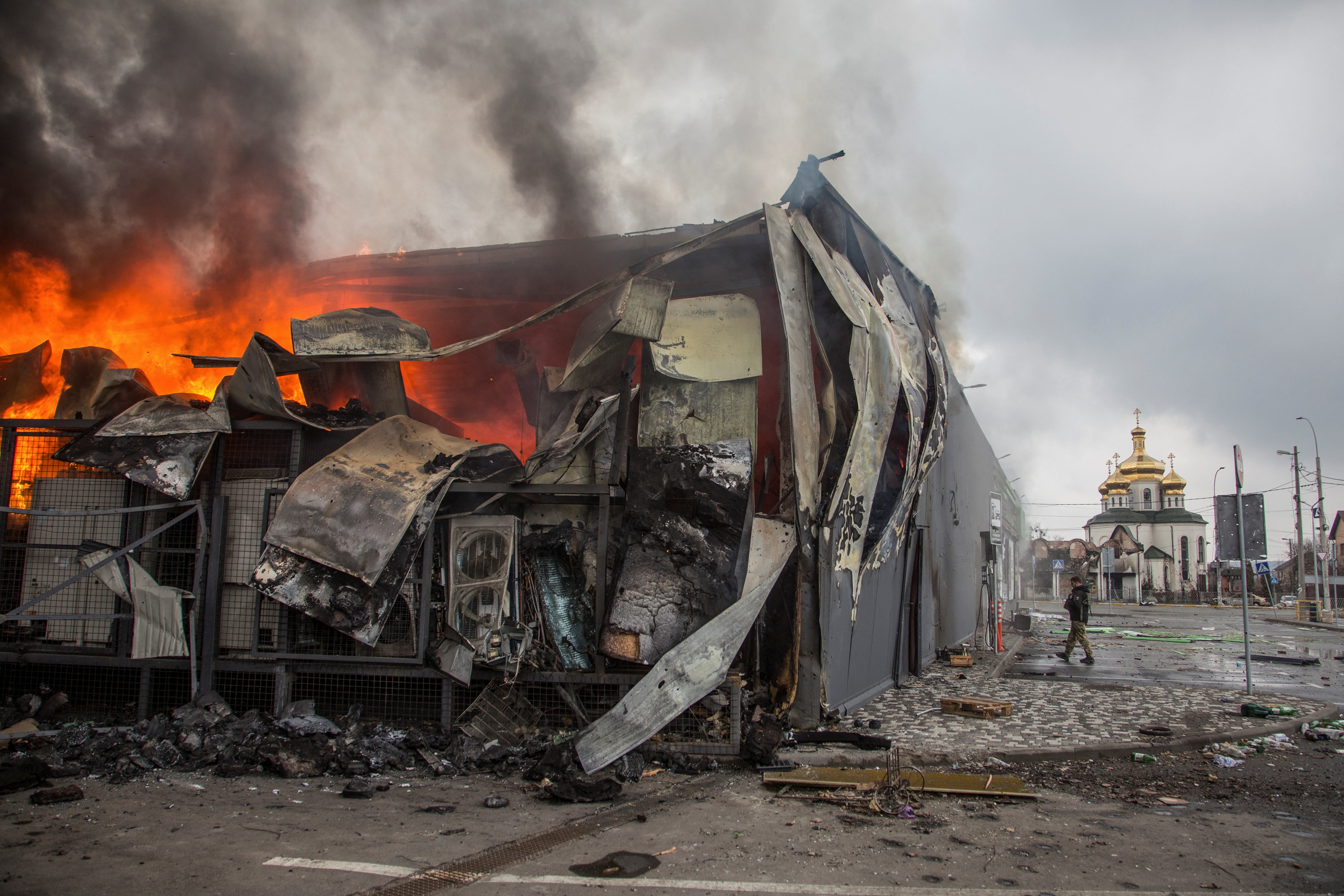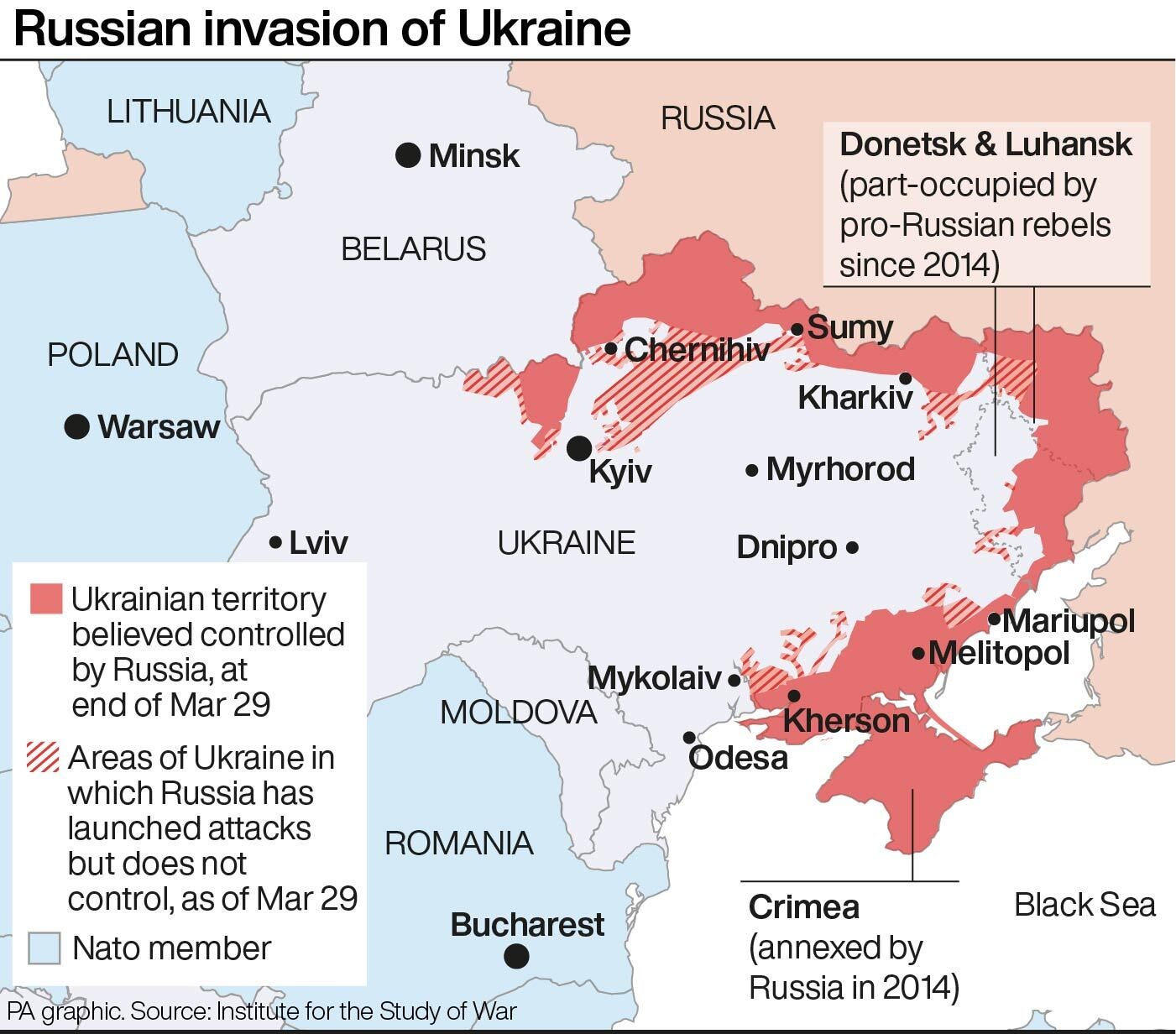Ukraine war: Russia using ‘banned anti-personnel landmines,’ campaign group says
POM-3s, which are not permitted under the 1997 Mine Ban Treaty, can detect when someone is approaching
Your support helps us to tell the story
From reproductive rights to climate change to Big Tech, The Independent is on the ground when the story is developing. Whether it's investigating the financials of Elon Musk's pro-Trump PAC or producing our latest documentary, 'The A Word', which shines a light on the American women fighting for reproductive rights, we know how important it is to parse out the facts from the messaging.
At such a critical moment in US history, we need reporters on the ground. Your donation allows us to keep sending journalists to speak to both sides of the story.
The Independent is trusted by Americans across the entire political spectrum. And unlike many other quality news outlets, we choose not to lock Americans out of our reporting and analysis with paywalls. We believe quality journalism should be available to everyone, paid for by those who can afford it.
Your support makes all the difference.Russian forces fighting in Ukraine have been accused of using anti-personnel mines designed to detect approaching footsteps and kill or “maim” people within a 16-metre radius.
A report by Human Rights Watch said POM-3 landmines, which are banned under international treaties, were discovered in the besieged northern city of Kharkiv on Monday by Ukrainian ordnance disposal technicians.
The US-based campaign group added the devices, known as “Medallion” mines, had failed to deploy.
POM-3s are designed to be fired into enemy territory and descend by parachute before burying themselves into the ground, if the earth is soft enough. They are equipped with a “seismic sensor”, according to the report, which registers when someone is approaching before launching a bomb.
The subsequent blast and shrapnel it projects can cause death and injury, Human Rights Watch said.
If they do not trigger, the mines are also reportedly able to self-destruct after a certain amount of time – which could be hours or days after deployment.
The 1997 international Mine Ban Treaty bans the production, stockpiling and transferring of antipersonnel mines, but Russia is not among the 164 countries that have joined it. Ukraine is, though, having signed up to the agreement in 1999.
According to Human Rights Watch, Russia’s use of the mines in Ukraine “marks a rare occurrence” in which a country not signed up to the treaty uses such weapons on the territory of one that is.
Footage circulated online reportedly shows armoured vehicles firing dozens of the mines into Kharkiv from specially designed ground launchers some nine miles away, two days before they were found on 28 March.
These launchers are capable of deploying mines from as far as 15km away, and first appeared during annual Russian military exercises in 2021, according to the Landmine Monitor 2021 report.
Depending on the terrain it lands on – soft or hard – a mine is intended to bury itself to become hard to spot, or use spring-loaded feet to stay upright until triggered.
The minefield is then visible only to Russian forces via an electronic map and can be remotely deactivated if necessary.

“Countries around the world should forcefully condemn Russia’s use of banned antipersonnel landmines in Ukraine,” Steve Goose, arms director of Human Rights Watch, said of the discovery. “These weapons do not differentiate between combatants and civilians and leave a deadly legacy for years to come.”
And he added: “Russia’s use of antipersonnel mines in Ukraine deliberately flouts the international norm against use of these horrid weapons.”
Russia told the UN General Assembly in 2020 that it “shares the goals of the treaty and supports a world free of mines,” but stressed it viewed antipersonnel mines “as an effective way of ensuring the security of Russia’s borders”.

It came after the use of Russian-origin anti-personnel mines was documented in more than 30 countries, including in Syria, Ukraine and Libya, by Human Rights Watch.
The discoveries “often coincided with Russian military presence as a party in those conflicts”, the group said in its report.
The Independent has a proud history of campaigning for the rights of the most vulnerable, and we first ran our Refugees Welcome campaign during the war in Syria in 2015. Now, as we renew our campaign and launch this petition in the wake of the unfolding Ukrainian crisis, we are calling on the government to go further and faster to ensure help is delivered. To find out more about our Refugees Welcome campaign, click here. To sign the petition click here. If you would like to donate then please click here for our GoFundMe page.

Join our commenting forum
Join thought-provoking conversations, follow other Independent readers and see their replies
Comments